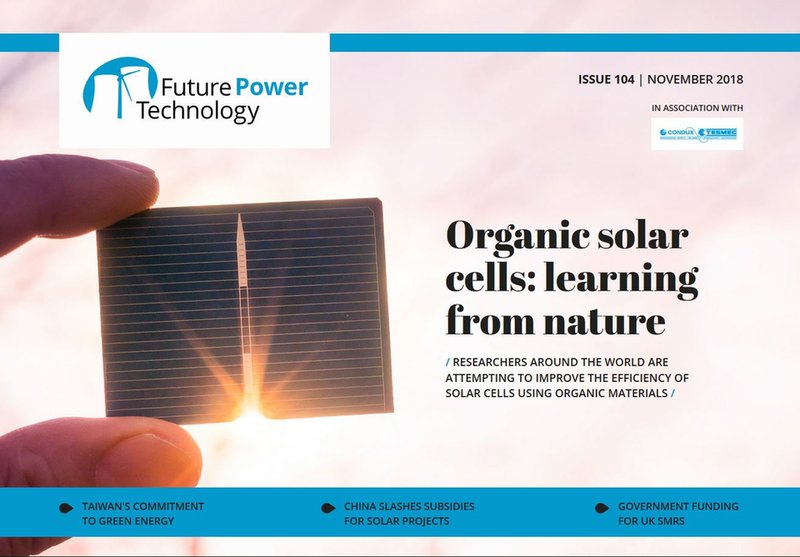feature Energy
Super-fast charging: new ideas drive the evolution of electric vehicles
Scientists at the University of Glasgow are developing a new energy storage system that can reduce the charging time for electric vehicles from hours to just seconds. Scarlett Evans finds out how it works and whether it could help to make EVs more popular.
Currently, there are over three million electric and plug-in hybrid cars used worldwide. The best seller is the Nissan leaf, of which 300,000 units were sold globally as of January 2018. In second place is the Tesla Model S, with 213,000 units sold as of December 2017.
Looking at these figures, it would be fair to assume that electric vehicles (EVs) are becoming common, as consumers become more proactive in mitigating their carbon footprint and as the infrastructure for EVs develops. However, when you consider that there were a whopping 79.02 million cars sold in 2017, the number of EVs pales in comparison.
One of the key points of contention with owning an EV is the lengthy time it takes to charge vehicles. A Nissan Leaf requires seven hours of charging to reach full capacity using a 208V-240V home-charging system, which, according to the manufacturer, allows the driver to travel 100 miles (the US Environmental Protection Agency estimates it at closer to 73 miles).
“One of the major hurdles involves recharging rates,” says battery expert Stephen Voller, founder and CEO of UK-based ZapGo. “Currently available chargers are unable to supply electricity to an electric vehicle at anything close to the five minutes that is required to refuel a conventional gasoline-powered car. This is true not only for the 3kW charge available from standard wall sockets and 30kW street chargers, but even Tesla’s 120kW chargers and cutting-edge 350kW chargers. It is not feasible to expect drivers to wait for much longer periods while their vehicles recharge.”
Jonathan Moss, partner and head of transport at DWF, recently conducted a study gathering responses from 250 senior experts in the transport industry.
He says: “The immaturity of electric road vehicle technology was ranked by respondents as the greatest barrier to its adoption (51%), which is unsurprising considering the fragmented range of technologies. However, for those working as planners and commissioners, it is the lack of vehicle variety that tops the list of things holding electric vehicles back.”
The hybrid electric-hydrogen flow battery
Professor Lee Cronin and his team at the University of Glasgow are attempting to address these problems related to the time it takes to charge an EV. They have developed a new ‘hybrid electric-hydrogen’ flow battery using the nano-molecule metal oxide, known as ‘exotic rust’, which can store electric power or hydrogen gas, according to a recent paper published in the Nature Chemistry journal.
The flow battery stores energy and releases power on demand as either electric power or hydrogen to be used as fuel. Concentrated liquids containing the ‘exotic rust’ can store up to ten times the amount of energy than conventional batteries. The energy can be released as electricity or hydrogen gas, providing flexibility in situations that may require either electric power or fuel.
The resulting material – a pumpable liquid – allows the owner to fill up their car in a matter of seconds. The old battery liquid would be removed quickly before the new liquid is pumped into the tank. Under this system, drivers would use one nozzle at a garage forecourt pump to remove the spent liquid and then pump in the fresh liquid using a second nozzle. What’s more, the team at Glasgow said that the battery liquid would provide just as much range as conventional petrol.
Could it boost the popularity of EVs?
Cronin is convinced of the potential benefits of the new system, which could help to provide a much-needed impetus for the popularity of EVs, as well as renewable energy storage, and electric-to-gas energy systems for when the necessity for fuel is unavoidable.
He explains that “the benefits are the extra increased energy density, the very long lifetime of the system, and the ability to ‘refuel’ by just changing the liquid like at a petrol station if it was to ‘refuel’ an electric car – note the old liquid would have to be collected and recharged.
“Also, the system can release the energy as either electric power or hydrogen gas. This means in stationary situations the system could be used to give renewable hydrogen, say, to heat a home that did not have a gas supply or replace a fossil fuel supply. The system would be recharged using either cheap grid power, or renewable wind or solar.”
Furthermore, the liquid is not too difficult to produce and the flow battery does not deteriorate in the same way a conventional battery does.
Of course, rolling out such a battery system would require the installation of new infrastructure at charging stations, which may currently prove cost-prohibitive. However, innovative appraoches such as the Glasgow research team's are crucial in highlighting the work that needs to be done, both in terms of funding and government backing, to overcome the obstacles that are currently holding back a wider adoption of electric vehicles.
